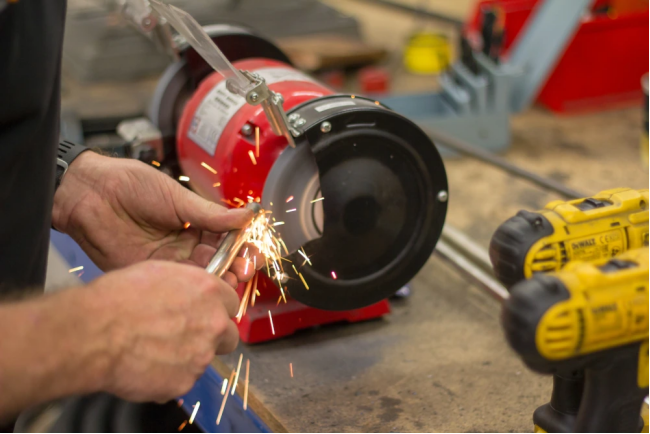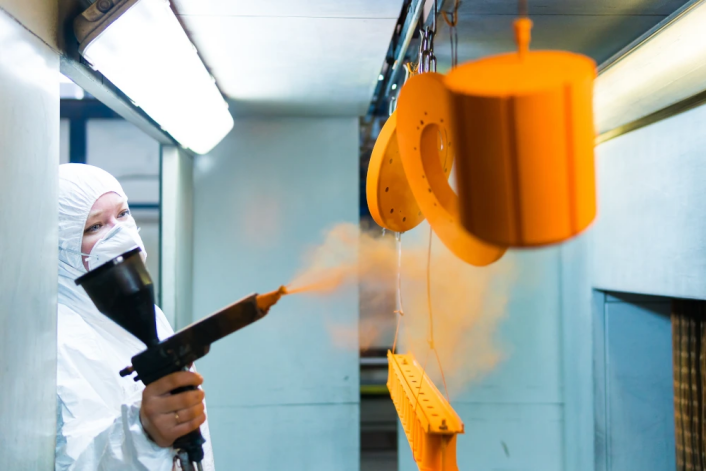Type 1: Plating (or conversion) coatings
Metal plating is the process of changing the surface of a substrate by covering it with thin layers of another metal such as zinc, nickel, chromium or cadmium.
Metal plating can improve the durability, surface friction, corrosion resistance and aesthetic look of a component. However, plating equipment may not be ideal for eradicating metal surface imperfections. There are two major types of plating:
Type 2: Electroplating
This plating process involves immersing the component in a bath containing metal ions for coating. A direct current is then delivered to the metal, depositing ions on the metal and forming a new layer over the surfaces.
Type 3: Electroless plating
This process uses no electricity because it is an autocatalytic plating that requires no external power. Instead, the metal component is immersed in copper or nickel solutions to initiate a process that breaks up the metal ions and forms a chemical bond.
Type 4: Anodizing
An electrochemical procedure that contributes to the creation of a long-lasting, attractive, and corrosion-resistant anodic oxide finish. This finish is applied by soaking the metal in an acid electrolyte bath before passing an electric current through the medium. The aluminum serves as the anode, with a cathode housed within the anodizing tank.
The oxygen ions released by the electrolyte mix with the aluminum atoms to form an anodic oxide on the workpiece’s surface. Anodizing, therefore, is a highly controlled oxidation of the metal substrate. It is most often used to finish aluminum parts, but it is also effective on nonferrous metals such as magnesium and titanium.
Type 5: Metal grinding
Grinding machines are used by manufacturers to smooth out metal surfaces with the use of abrasives. It is one of the final phases in the machining process, and it helps to decrease the surface roughness left on the metal from previous processes.
There are many grinding machines available, each providing varying degrees of smoothness. Surface grinders are the most commonly used machines, but there are many more specialty grinders available too such as Blanchard grinders and centerless grinders.

Type 6: Polishing/Buffing
With metal polishing, abrasive materials are used to reduce the surface roughness of a metal alloy after it’s been machined. These abrasive powders are used in conjunction with felt or leather wheels to polish and buff metal surfaces.
Aside from reducing surface roughness, polishing can improve the appearance of part — but this is only one purpose of polishing. In certain industries, polishing is used to create hygienic vessels and components.
Type 7: Electropolishing
The electropolishing process is the inverse of the electroplating process. Electropolishing removes metal ions from the surface of metal components rather than depositing them. Before applying an electrical current, the substrate is immersed in an electrolyte bath. The substrate is transformed into the anode, with ions flowing from it to eliminate flaws, rust, dirt and so forth. As a result, the surface is polished and smooth, with no lumps or surface debris.
Type 8: Painting
Coating is a wide term that encompasses various surface finish subcategories. The most common and least expensive choice is to use commercial paints. Some paints can add color to a metal product to make it more visually appealing. Others are also used to prevent corrosion.

Type 9: Powder coating
Powder coating, a modern kind of painting, is also an option. Using an electrostatic charge, it attaches powder particles to metal parts. Before being treated with heat or ultraviolet rays, the powder particles evenly cover the material surface. This procedure is fast and efficient for painting metal items such as bike frames, automobile parts and general fabrications.
Type 10: Blasting
Abrasive blasting is commonly used for products that require a consistent matte texture. It is a low-cost method for combining surface cleaning and finishing into a single operation.
During the blasting process, a high-pressure abrasive flow sprays the metal surface to modify the texture, remove debris and produce a smooth finish. It can also be used for surface preparation, plating and coating to extend the life of metal items.
Type 11: Brushing
Brushing is a similar operation to polishing, producing a uniform surface texture and smoothing off a part’s exterior. The process uses abrasive belts and tools to impart a directional grain finish to the surface.
The results may vary depending on how the technique is applied by the manufacturer. Moving the brush or belt in a single direction, for example, might aid in the creation of slightly rounded edges on the surface.
It is only recommended for use on corrosion resistant materials such as stainless steel, aluminum and brass.
JINDALAI is a leading metal group in China, we can supply all metal finishes based on your needs, Provide the most suitable solution for your project.
Contact us now!
TEL/WECHAT: +86 18864971774 WHATSAPP: https://wa.me/8618864971774 Email: jindalaisteel@gmail.com Website: www.jindalaisteel.com .
Post time: May-12-2023








